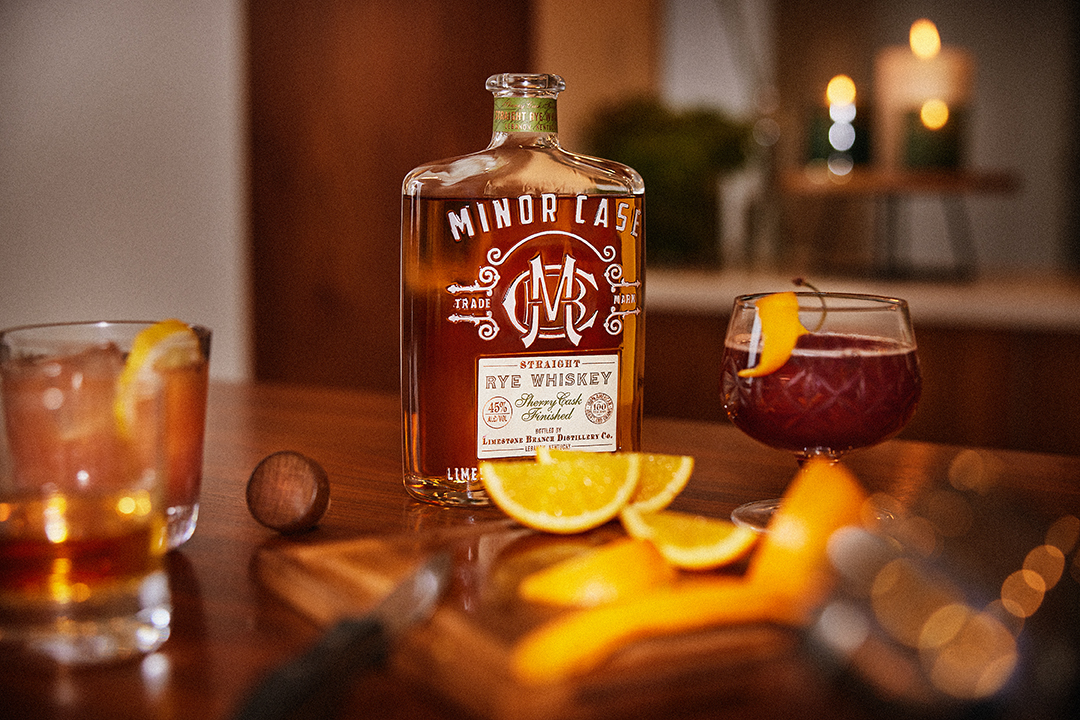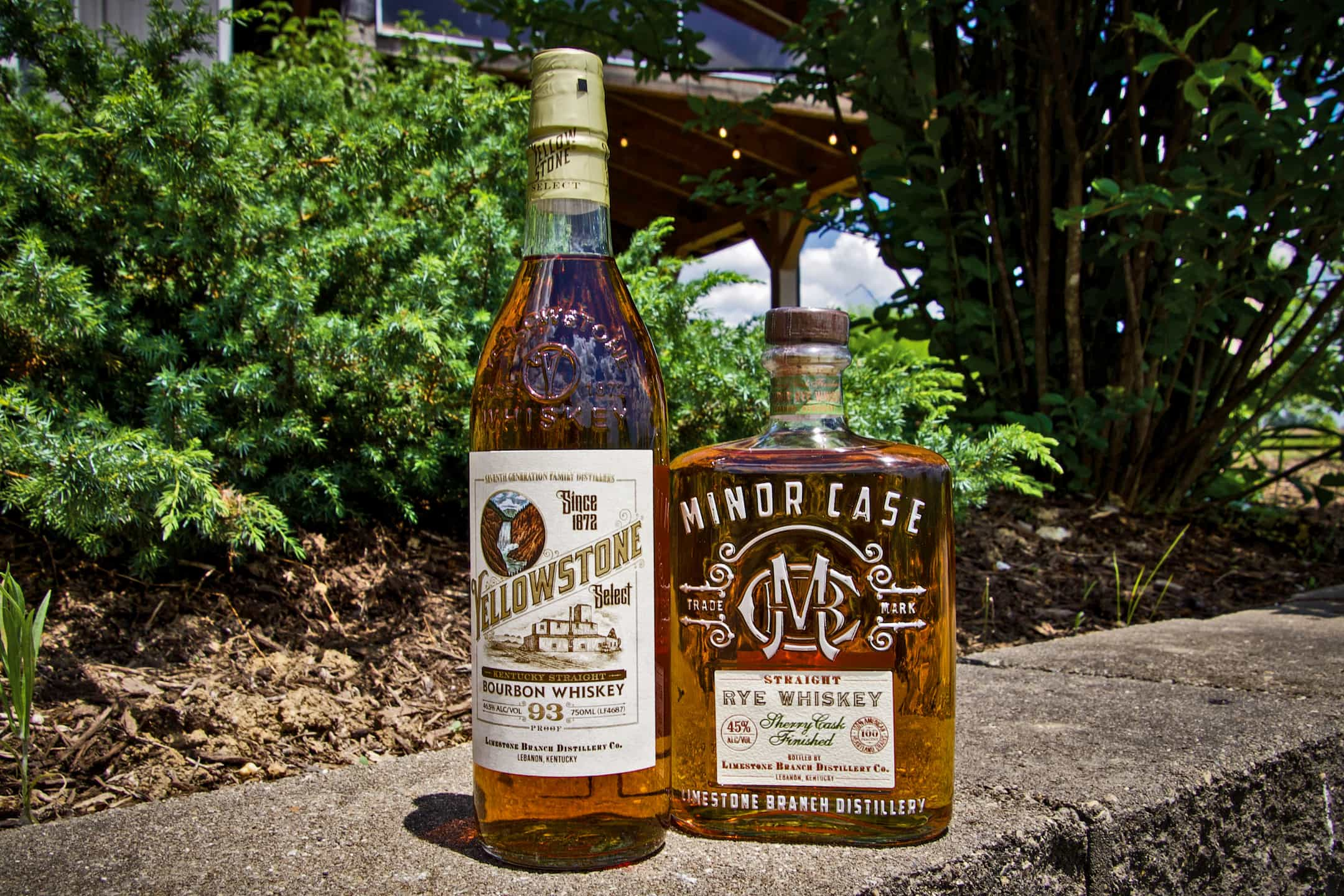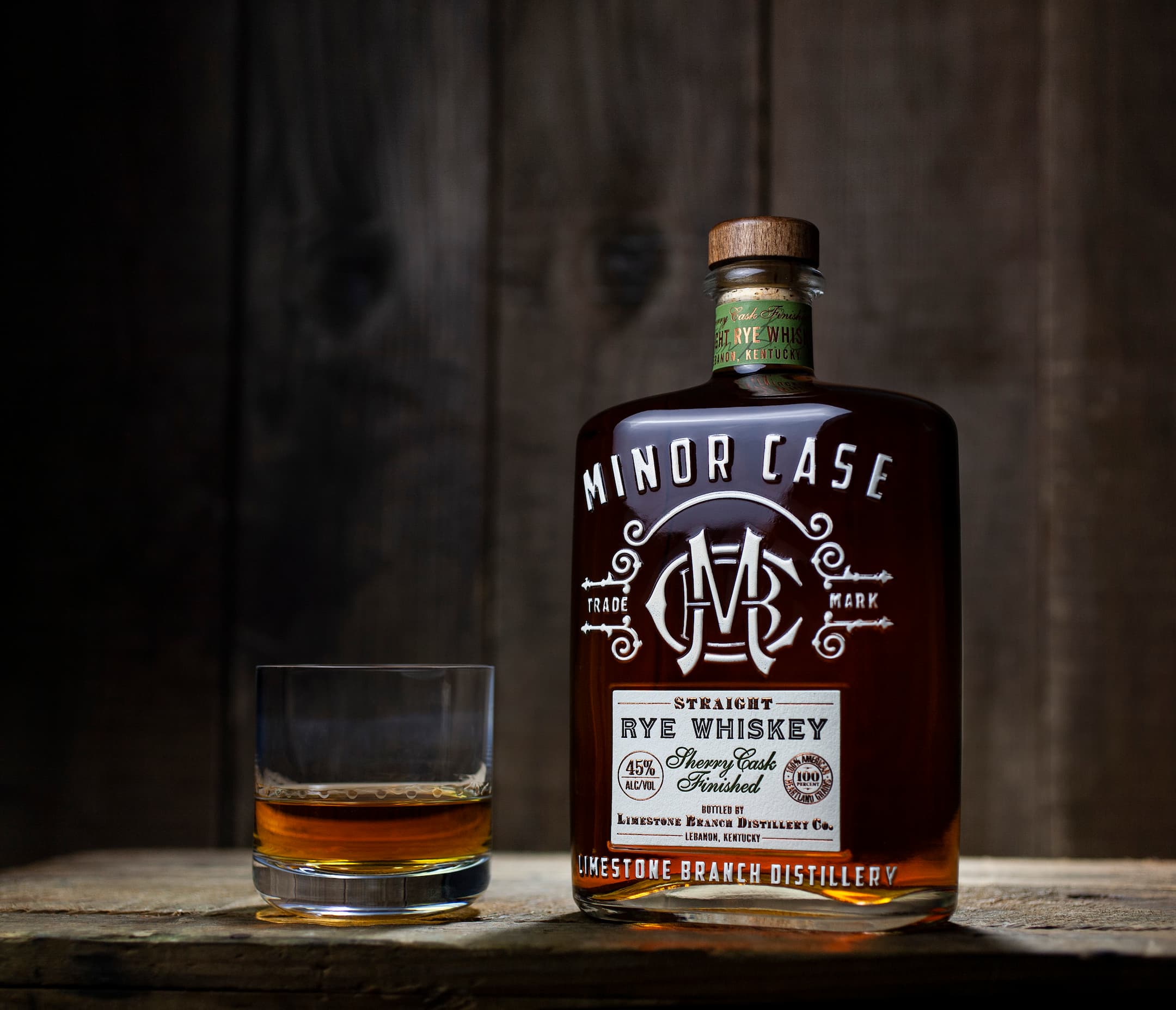Minor Case Straight Rye Whiskey, with its earthy notes, sweet sherry aroma, and smooth finish of dried fruit and butterscotch, is an ideal spirit for seasonal cocktails.
Its unique character blends seamlessly into fall and winter flavors, adding warmth and depth to every sip. Here, we’ve crafted six signature cocktails—three for fall and three for winter—to bring out the best in Minor Case Straight Rye Whiskey and elevate your seasonal gatherings.
Fall Cocktails
Toasted Old Fashioned
This twist on the classic Old Fashioned embraces autumn with a hint of maple syrup, which complements Minor Case’s butterscotch and dried fruit notes. The result is a rich, smooth drink perfect for sipping by the fire.
Ingredients
- 2 oz Minor Case Straight Rye Whiskey
- 0.5 oz vanilla simple syrup
- 2 toasted almond bitters
- 2 dashes of orange bitter
- Luxardo cherry and orange peel for garnish
Instructions
- In a glass, mix the first 4 ingredients together and pour over ice
- Garnish with the luxardo cherry and orange peel
Autumn Spice Manhattan
This Manhattan variation combines Minor Case with a hint of cinnamon and sweet vermouth, delivering a fall-forward cocktail with warm, spicy notes.
Ingredients
- 2 oz Minor Case Straight Rye Whiskey
- 1 oz sweet vermouth
- 1 dash cinnamon bitters
- Cinnamon stick for garnish
Instructions
- Combine Minor Case Straight Rye Whiskey, sweet vermouth, and cinnamon bitters in a mixing glass with ice.
- Stir until well-chilled, then strain into a chilled glass.
- Garnish with a cinnamon stick for a hint of spice.
Apple Rye Mule
This fall-inspired mule features apple cider, ginger beer, and Minor Case Straight Rye Whiskey, offering a refreshing take on classic autumn flavors.
Ingredients
- 1.5 oz Minor Case Straight Rye Whiskey
- 3 oz apple cider
- 2 oz ginger beer
- Apple slice and cinnamon stick for garnish
Instructions
- Fill a mule mug with ice.
- Add Minor Case Straight Rye Whiskey, apple cider, and ginger beer. Stir to combine.
- Garnish with an apple slice and cinnamon stick for a festive touch.
Winter Cocktails
Spiced Rye Hot Toddy
A cozy winter warmer, the Spiced Rye Hot Toddy combines honey, lemon, and Minor Case Straight Rye Whiskey for a soothing drink ideal for cold nights.
Ingredients
- 1.5 oz Minor Case Straight Rye Whiskey
- 1 tbsp honey
- 0.5 oz lemon juice
- 4 oz hot water
- Lemon slice and cinnamon stick for garnish
Instructions
- In a mug, combine honey, lemon juice, and Minor Case Straight Rye Whiskey.
- Pour in hot water and stir until the honey dissolves.
- Garnish with a lemon slice and cinnamon stick.
Sherry Rye Flip
This creamy winter cocktail combines Minor Case Straight Rye Whiskey with cream and a touch of sherry, creating a rich and indulgent drink with a hint of warmth.
Ingredients
- 1.5 oz Minor Case Straight Rye Whiskey
- 0.5 oz cream sherry
- 1 oz heavy cream
- Freshly grated nutmeg for garnish
Instructions
- Combine Minor Case Straight Rye Whiskey, cream sherry, and heavy cream in a shaker with ice.
- Shake well and strain into a coupe glass.
- Garnish with freshly grated nutmeg.
Cranberry Rye Smash
This festive cocktail brings together tart cranberry, rosemary, and Minor Case Straight Rye Whiskey for a refreshing winter drink with a burst of seasonal flavor.
Ingredients
- 2 oz Minor Case Straight Rye Whiskey
- 1 oz cranberry juice
- 0.5 oz simple syrup
- Fresh rosemary sprig and cranberries for garnish
Instructions
- Muddle a rosemary sprig in a shaker with simple syrup.
- Add Minor Case Straight Rye Whiskey, cranberry juice, and ice. Shake well.
- Strain into a glass over ice and garnish with cranberries and a rosemary sprig.
Ready to try these seasonal cocktails for yourself? Find Minor Case Straight Rye Whiskey near you.



